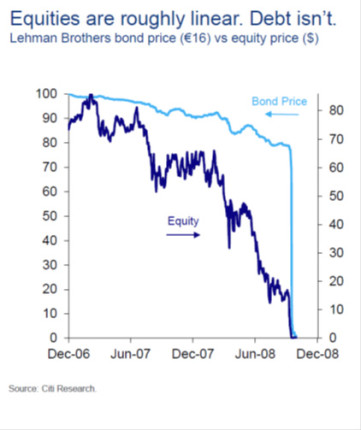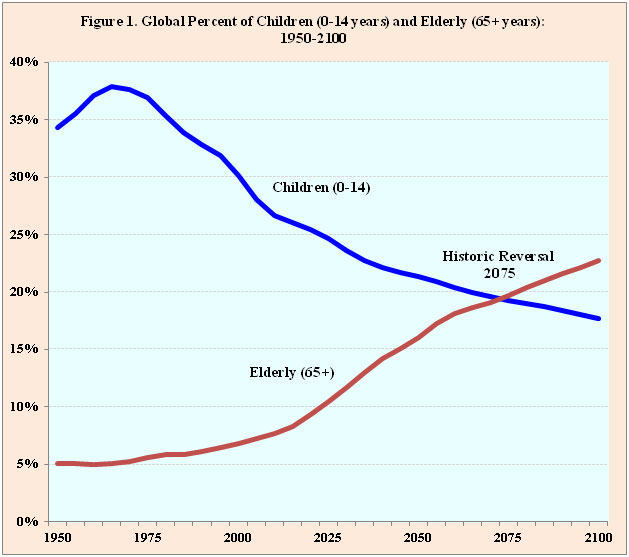By Chris at www.CapitalistExploits.at
Market dislocations occur when financial markets, operating under stressful conditions, experience large widespread asset mispricing.
Welcome to this week’s edition of “World Out Of Whack” where every Wednesday we take time out of our day to laugh, poke fun at and present to you absurdity in global financial markets in all it’s glorious insanity.

While we enjoy a good laugh, the truth is that the first step to protecting ourselves from losses is to protect ourselves from ignorance. Think of the “World Out Of Whack” as your double thick armour plated side impact protection system in a financial world littered with drunk drivers.
Selfishly we also know that the biggest (and often the fastest) returns come from asymmetric market moves. But, in order to identify these moves we must first identify where they live.
Occasionally we find opportunities where we can buy (or sell) assets for mere cents on the dollar – because, after all, we are capitalists.
In this week’s edition of the WOW we’re covering global demographics
Before diving into what and why demographics matter some context is required.
Western, which is to say civilised (mostly), societies have all increasingly embraced various social systems. Some more than others but it’s pretty universal across the industrialised world today.
This is understandable when viewed from a wider perspective and with historical context. Though the concept of social safety net is far from new, the trend towards social systems accelerated coming out of World War II, due in no small part to the extreme uncertainty that both the allies and their enemies suffered. War has a way of creating crippling uncertainty.
A social welfare and pension system provided by the state was the cuddly safety blanket citizens were all too eager to accept. Exhausted, afraid, and demoralised citizens were more than ready to grasp at any semblance of safety and security. Easy suckers. People are most vulnerable when fearful and weak.

It was an easy ruse for politicians whose job it is to convince a citizenry of their own necessity.
The ability to pay for this soft fluffy safety blanket was provided with the baby boom that followed the war. This provided politicians with the ability to amortise the theft taxes levied well into the future. That was then and this is now. Unfortunately that future is now.
It is one of the most classic examples of linear thinking in a dynamic world you could ever wish to find. Pensions, welfare payments, social security, cash for clunkers, and the myriad other absurd programs which comrade clipboard decided were in our best interests… These are all the natural consequence of a power left unchecked and a populace to ignorant or to self absorbed to understand that there is no such thing as a free lunch.
If you put a pack of rapists amongst a team of high school cheerleaders incapable of protecting themselves then well, they’re gonna get raped, aren’t they? And raped indeed the populace has been.
It all started with an obvious problem of financing a gap in cashflows. No problem, the coiffed haired suits said. We’ll simply forward sell cashflows (i.e taxes) to pay for it.
Forward selling cashflows is of course simply a bond. Cashflows based on taxes received and issued as a note are of course government bonds. Extrapolating those cashflows was really a function of extrapolating birth rates. Convert births into tax paying citizens and you can manage your financing. Perfect, until the math no longer holds water. Welcome to the future present.
Bond markets are far easier to understand and price than equities – for the simple reason that you’re working with more known mathematical variables.
Worth noting is that when taken to extremes on either end of the risk curve, bonds don’t function AT ALL like equities.
Remember: equities are roughly linear, bonds are not. They can, and do go, “no bid”. As an example, remember this?

This is the end result though there are a few pieces of the puzzle and one of those pieces is labour.
Let me explain.
The P/E (price to earnings) ratio is commonly used to help value equities. What’s important to understand is that it is the earnings which affect the price, not the price which affects the earnings. When earnings fall it’s typical that price follows.
What does this have to do with demographics?
Well, the “earnings” on a bond come from “Joe and Jane Sixpack”, the tax paying citizens. Fewer “Joes and Janes” can’t possibly be good for bond prices in a rational world.
Beginning in 1995 with Italy, the population reversal is rolling through western civilisation like a wrecking ball. This is the situation where a society has more people with false teeth than those being visited by the tooth fairy. In 2005, 6 more countries joined Italy in the population reversal club and by 2030 no less than 56 countries will be in the club.
Demographer Joseph Chamie produced a detailed report on the topic. The graphic below is excerpted from his work and provides a snapshot of the countries affected and the relevant timelines.

Throughout human history we’ve always had a growing population with more children than elderly. Dependency ratios were rising for 40 years but are now falling and reversing altogether.
It’s like going 100km/hr down the freeway and then not only slowing down but stopping and throwing the car into reverse.
What’s about to hit us is something we’re ill prepared for.

One of the most powerful forces in the global economy since Bretton Woods has been a growing and abundant labour force. But this is now rapidly disappearing.
Deflationary Forces
A large labour supply is deflationary by nature. It has, together with technological advancements, caused 40 years of real consumer prices to fall.
Globalisation allowed multi nationals to grab a hold of this army of cheap labour and then, to top it off, we had the fall of the Soviet Union, followed by the subsequent addition of China to the world’s labour supply.
“Labour arbitrage” became yet another deflationary force in the global macro economy as multinationals moved their labour intensive operations to the cheapest labour pools. It is where we find ourselves today – with every imaginable consumer good being of higher quality and cheaper than we could have ever imagined 40 years ago.
Now we find ourselves on the tail end of this demographic boom – with the labour supply decreasing and excessive accommodative monetary policy (which ironically also allowed China to build factories and entire cities which in turn employed this labour pool) causing further deflation of consumer goods.
Central Banks Adding Their Bit
Central bank policies have provided an extrapolation of the deflation in consumer goods described above, right at a time when those forces are reversing. We need only to look at global debt to see this phenomenon.
Could it be that, at the tail end of the demographic cycle, this one element (labour) of deflation is vanishing in front of us?
We can see this trend reversing with wages now rising in China for the past decade. Expecting corporate profits to hold their ground while labour costs rise may not be the best strategy going forward.
Furthermore, is it not possible that scarce labour could fuel further wage growth, while fiscal expansion from rising healthcare and ageing costs could result in inflation?
After all, we know that life expectancy continues to rise so it’s not only reasonable but inevitable that this cost push will come.
Right now there is this incredibly one sided viewpoint in markets that we will experience deflation well into the sunset and, while that may happen, betting that way pays you exactly nothing. Sure, I guess bonds can go from negative to more negative but I’m not one for picking up pennies in front of a steamroller at not only the tail end of the debt super cycle but at the tail end of the demographic boom.
From a social perspective we do know that governments all over the industrialised world cannot sustain current pension plans and social obligations.
What then are their options?
They can try what Frau Merkel is trying by importing terrorists refugees but, as I mentioned recently, this comes with a cauldron of problems where the medicine is almost certainly worse than the disease. Merkel is pressing on with this program which only proves that if she was any stupider she’d need to be watered twice a week.
Or governments can raise the retirement age and push obligations into the bell curve of death. This I think is a no-brainer. It’s going to happen for mathematical reasons alone.
Of course there is the Krugmanesque route which involves fighting off some aliens or more likely starting a war. This suggestion in the realm of stupid runs three grades: stupid, unbelievably stupid, and war. It’s certainly possible given the clutch of “leaders” on offer, though I do wonder about the appetite for war coupled with ageing populations.
As I see it, there are no easy options for these knuckle-draggers. None. Default is inevitable. It will be the citizens who pay the price. The only question is….
 Cast your vote here and also see what others think
Cast your vote here and also see what others think
Investing and protecting our capital in a world which is enjoying the most severe distortions of any period in mans recorded history means that a different approach is required. And traditional portfolio management fails miserably to accomplish this.
And so our goal here is simple: protecting the majority of our wealth from the inevitable consequences of absurdity, while finding the most asymmetric investment opportunities for our capital. Ironically, such opportunities are a result of the actions which have landed the world in such trouble to begin with.
– Chris
“Demographics is destiny.” – Arther Kemp (author)
The post Coming This Way… Demographic Shock appeared first on crude-oil.top.
